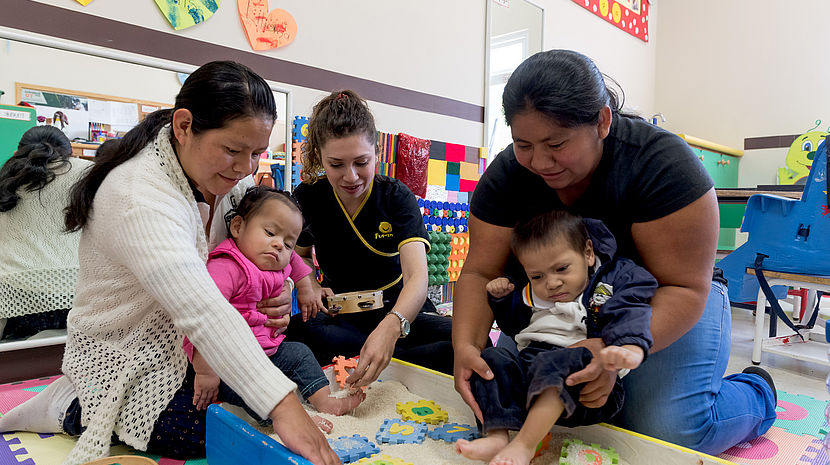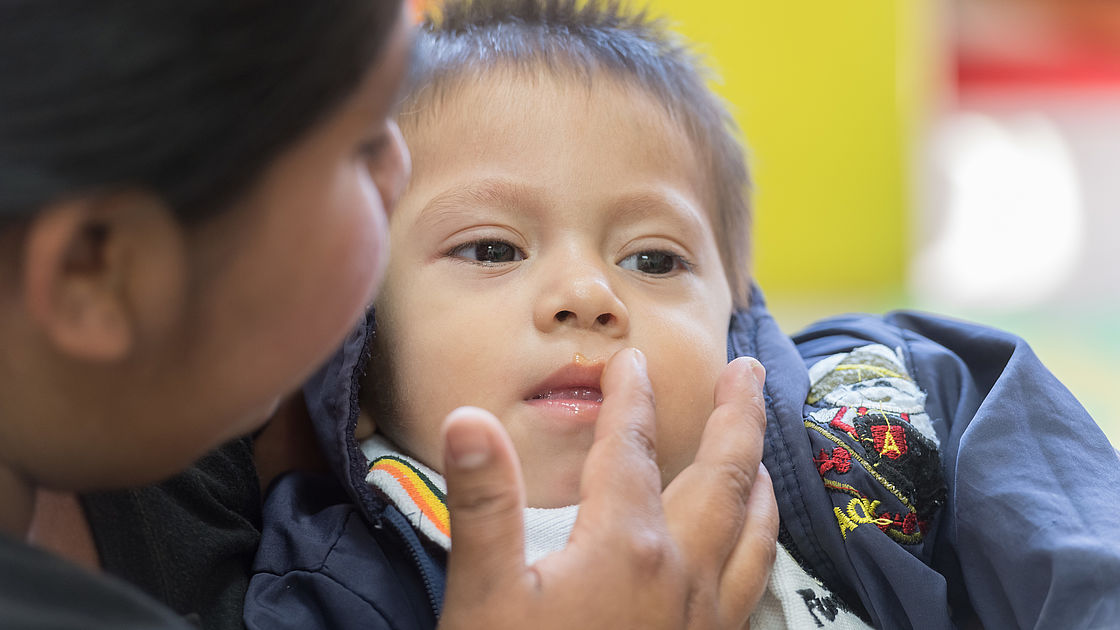CBM Commemorates Helen Keller Day with Launch of Guidelines on Persons Living with Deafblindness

©CBM/argum/Einberger
On the 27th of June we officially celebrate the anniversary of Helen Keller’s birth. To mark this important occasion, CBM has launched its guidelines. Access them here.
These guidelines are available in English and Spanish and aim to assist governments, education agencies, public and private service providers, professionals and family members in building meaningful and appropriate programmes for persons living with deafblindness in low and middle-income countries.
They identify the knowledge and skills needed to enable and empower persons living with deafblindness to reach their full potential and become successful contributing members of society. It outlines many considerations for service implementation and has multiple real-life stories from persons living with deafblindness.
Guidelines on Best Practice for Persons Living with Deafblindness
The guidelines were developed by a group of people with years of experience of work in the field of deafblindness in different parts of the world.
Access the guidelines here
Part One gives an overview of the impact deafblindness can have on an individual’s development and learning. It emphasises the need for a continuum of services and programmes. Part Two outlines components of education and rehabilitation programmes and provides guidelines on communication, assessment, advocacy, transition planning, and more. Part Three considers how to improve and expand existing services through the provision of on-going personnel capacity building, and through networking with key stakeholders.
The guidelines were developed by a group of people with years of experience of work in the field of deafblindness in different parts of the world. In addition to English, the guidelines are available in Spanish; other translations will be uploaded in due course.
From my experience in talking with parents, teachers, administrators and students themselves, I know how challenging it can be to develop quality services for people with deafblindness in low-resource settings. I hope these guidelines will provide practical insights and ideas as well as being an encouragement that this is possible.Aline Zwanenburg, Technical Advisor in deafblindness and co-author of the guidelines
CBM work in deafblindness
CBM supports people with deafblindness in the following ways:
- Several programmes working in community-based services support their inclusion in community life
- Access to early identification
- Access to early interventions
- Awareness programmes about the needs of persons living with deafblindness
- Training for parents and teachers on how best to work with and include boys and girls with deafblindness in family, community and school activities
- Ensuring that reasonable accommodations are in place to ensure that adults who are deafblind can join in courses supported by CBM and partners

CBM/argum/Einberger
What is deafblindness?
The term ‘deafblindness’ refers to combined hearing and vision loss. Although most individuals with deafblindness have some functional use of vision and hearing, the combination of losses greatly impairs the ability to gather auditory and visual information. This creates intensive communication and learning needs that cannot be met by programmes designed solely for persons who are blind or have low vision, or persons who are hard of hearing or deaf.
Like Helen Keller herself, not all people are born deafblind, many acquire it through illness in early years or later life, have a genetic condition which leads to deafblindness (Usher Syndrome) or are born deafblind. One of the most common causes of deafblindness in low and middle income countries is Rubella.
Some people with deafblindness are completely deaf and/or blind, but many others have a varying degrees of sight and/or hearing they can use. Some may have other physical and learning disabilities to cope with as well. Regardless of the level of deafness and blindness, the important factor for reducing the impact of this disability is early identification and early intervention.
For a comprehensive definition, see the Nordic Definition of Deafblindness.
More about Helen Keller
Helen Keller was an inspirational figure for her advocacy for the human rights of all persons with disabilities during her lifetime. The first deaf-blind person to earn a Bachelor’ degree in Arts, she wrote 12 published books, most of which became worldwide best-sellers.
Helen Keller was born in 1880 in Tuscumbia, Alabama. She lost her sight and her hearing at the age of 19 months to a disease now believed to have been scarlet fever. She found an inspiring teacher in Anne Sullivan, an educator at Perkins Institute for the Blind in Boston. She supported Helen not only in academic life, but also social life. Sullivan taught Keller how to read and write in Braille and to use tactile hand signs, which helped Keller to communicate with the world around her. Helen Keller went on to become an academic, a linguist, a political activist, an author.